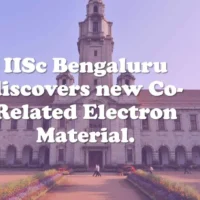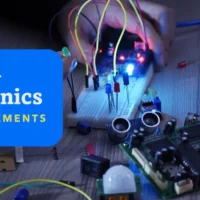Simplified Power System Optimization: 5 Keys to Unlock Efficiency and Sustainability
- by Sajal Raj
- 4 February 2024
- 5 minutes read

I. Introduction
A. What is Power System Optimization?
Power system optimization involves enhancing the efficiency and sustainability of electrical power systems through strategic decision-making and advanced technologies. It aims to find the optimal mix of resources, technologies, and operational strategies to meet the increasing demand for electricity while minimizing costs, ensuring reliability, and promoting environmental sustainability.
B. Why is Power System Optimization Important?
Power system optimization is critical in addressing growing energy demands, integrating renewable sources, and fostering sustainable energy solutions. It ensures that power systems operate at peak efficiency, leading to reduced operational costs, improved reliability, and a smaller environmental footprint. It plays a crucial role in adapting power systems to the evolving energy landscape.
C. Objectives of Power System Optimization
The primary objectives of power system optimization include:
- Efficiency Improvement: Enhancing the overall efficiency of power generation, transmission, and distribution processes to minimize energy losses and resource wastage.
- Cost Minimization: Identifying cost-effective strategies for the operation and maintenance of power systems while maximizing revenue and minimizing expenditure.
- Reliability Enhancement: Ensuring the reliable and secure delivery of electricity by optimizing the grid structure and improving the overall resilience of the power system.
- Environmental Sustainability: Reducing the environmental impact of power systems by optimizing resource utilization, minimizing emissions, and integrating renewable energy sources.
II. Components of Power System
A. Generation
1. Types of Power Plants
Power generation encompasses various technologies, including fossil fuel-based plants, nuclear power, and renewable energy sources like solar, wind, and hydropower. Optimizing the mix involves considering factors such as cost, environmental impact, and energy availability.
2. Renewable Energy Integration
The integration of renewable energy into power systems requires optimization to manage the intermittent nature of sources like solar and wind. This involves advanced forecasting, energy storage solutions, and smart grid technologies.
B. Transmission
1. Grid Structure
Optimizing the grid structure involves designing an efficient and reliable transmission network, determining optimal line capacities, substation locations, and planning for future expansions.
2. Power Flow Analysis
Power flow analysis helps optimize the transmission system by identifying potential bottlenecks and voltage stability issues. Advanced monitoring and control technologies enable real-time adjustments to maintain grid stability.
C. Distribution
1. Substation Design
Efficient substation design is critical for effective energy distribution. Power system optimization in distribution includes the layout and capacity planning of substations to minimize losses and enhance system reliability.
2. Load Management
Optimizing load management involves balancing electricity demand and supply in real-time. Demand response programs, smart meters, and advanced control systems contribute to effective load management.
III. Types of Power System Optimization
A. Economic Optimization
1. Cost Minimization
Economic optimization aims to minimize operational costs through efficient resource allocation, scheduling, and maintenance strategies.
2. Revenue Maximization
Maximizing revenue involves optimizing energy trading, pricing models, and exploring new business models to capitalize on market opportunities.
B. Technical Optimization
1. Loss Minimization
Technical optimization focuses on minimizing energy losses during transmission and distribution through the use of advanced technologies and strategic planning.
2. Voltage Stability
Optimizing voltage stability ensures that the power system operates within acceptable voltage limits, preventing equipment damage and improving overall system performance.
C. Environmental Optimization
1. Emission Reduction
Environmental optimization targets the reduction of greenhouse gas emissions by promoting cleaner energy sources, improving energy efficiency, and implementing carbon capture technologies.
2. Renewable Integration
Optimizing the integration of renewable energy sources involves managing their variable nature, ensuring grid stability, and maximizing their contribution to the overall energy mix.
IV. Optimization Techniques
A. Mathematical Programming
1. Linear Programming
Linear programming models optimize power system operations by mathematically solving linear relationships, addressing resource allocation and scheduling challenges.
2. Nonlinear Programming
Nonlinear programming extends optimization to more complex, non-linear relationships within power systems, providing solutions to intricate problems.
B. Heuristic Methods
1. Genetic Algorithms
Genetic algorithms mimic the process of natural selection to find optimal solutions in large solution spaces, making them suitable for complex optimization problems.
2. Particle Swarm Optimization
Inspired by social behavior, particle swarm optimization involves individuals (particles) working together to find the optimal solution through iterative improvement.
C. Metaheuristic Approaches
1. Simulated Annealing
Simulated annealing emulates the annealing process in metallurgy to find global optimization solutions by exploring the solution space while gradually decreasing the exploration rate.
2. Ant Colony Optimization
Ant colony optimization is inspired by the foraging behavior of ants. It uses artificial ants to find optimal paths through iterative exploration and pheromone-based communication.
V. Challenges in Power System Optimization
A. Uncertainty in Load and Generation
The unpredictability of both electricity demand and generation from renewable sources poses challenges for accurate forecasting and optimal planning.
B. Integration of Renewable Energy Sources
Integrating intermittent renewable sources requires sophisticated optimization to manage the variability and uncertainty associated with these energy inputs.
C. Cybersecurity Concerns
The increasing reliance on digital technologies in power systems introduces cybersecurity challenges that must be addressed to safeguard against potential threats.
VI. Case Studies
A. Application of Optimization in Real Power Systems
Examining successful applications of optimization in real-world power systems demonstrates the practical benefits and lessons learned from implementation.
B. Successful Implementations and Results
Analyzing case studies showcasing successful implementations provides insights into the impact of optimization on efficiency, cost savings, and sustainability.
VII. Future Trends and Emerging Technologies
A. Smart Grids
Smart grids leverage advanced communication and control technologies to enhance efficiency, reliability, and resilience in power systems.
B. Artificial Intelligence in Power System Optimization
The integration of artificial intelligence, including machine learning algorithms, further enhances the capabilities of power system optimization, allowing for real-time decision-making and adaptation.
C. Advanced Energy Storage Systems
Incorporating advanced energy storage technologies optimizes power system operations by balancing supply and demand and increasing grid flexibility.
DoFollow the link to know more about power system optimization Click Here
VIII. Conclusion
A. Summary of Key Findings
Summarizing the key findings emphasizes the multi-faceted benefits of power system optimization, including economic savings, environmental sustainability, and improved system reliability.
B. Importance of Continuous Optimization in Evolving Power Systems
Highlighting the importance of ongoing optimization emphasizes its role in adapting power systems to evolving challenges, technological advancements, and changing energy landscapes. Continuous optimization ensures that power systems remain resilient, efficient, and sustainable over time.
Click Here to learn more about power grid technology
Join our Whatsapp community
These are
Articles
Optimizing Power Quality: A Comprehensive Exploration of PWM Techniques for Harmonic Reduction in Power Electronics
Microgrids: Revolutionizing Energy Infrastructure for a Sustainable Future
Discover more from WireUnwired Research
Subscribe to get the latest posts sent to your email.








